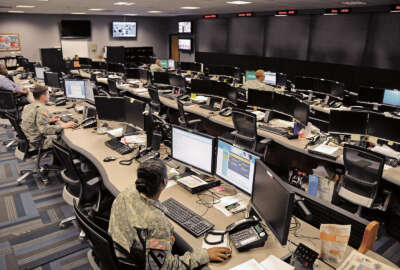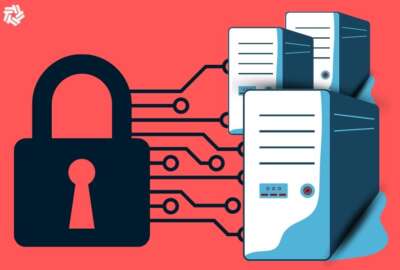The Army has long talked about simplifying its IT networks, and it is finally getting closer to delivering it. Over a year ago, the service’s IT portfolio consisted of 42 disparate organizational networks. It has now been consolidated to 14, and the goal is to collapse it down to one greater Army network by 2027.
“We’re probably about three years out; at least, that’s our goal. But every time we sit down with a partner, we learn something new about a network, and we go, ‘Ok, now it’s going to take a little bit longer.’ But the goal over the next three years is to collapse the last 14 [networks]. I think the Army has put the resources in place to do this. And so now it’s about time,” Maj. Gen. Christopher Eubank, the commander of Army Network Enterprise Technology Command told Federal News Network at the AFCEA Army IT day on Jan. 11.
Army Chief of Staff Gen. Randy George made it clear last year that the network is the Army’s biggest modernization priority, and NETCOM has been leading the effort of delivering the network that connects all of the service’s pieces based on zero trust principles.
This year, the command will focus on the Army National Guard, the Army Reserve and the Army Materiel Command’s networks. Eubank’s team will be looking into the Army Corps of Engineers’ environment to ensure they have a thorough understanding of their network before starting the convergence process.
“What we don’t want to do is to converge you and then figure out we’ve broken a bunch of stuff. And with people like Army Materiel Command and the Corps of Engineers, they have a lot of unique things. And so we’ve just got to make sure we don’t break those things as we converge the networks,” Eubank said.
The command is also conducting a pilot with the 7th Infantry Division at Joint Base Lewis-McChord, where Eubank and his team are looking at the division’s tactical network and determining how it can be collapsed into the broader network without losing access to the data and resources they need.
“It’s going to be interesting in February when we test this out. So the goal is to prove that organizational network, like other organizational networks, can be collapsed into the greater Army network,” Eubank said.
As for the SIPRNet effort, at this point, NETCOM is able to provide commercial solutions for classified data across the globe. It is currently in the process of standing up a node enabled by global commercial solutions for classified data in Hawaii, with the goal of getting it to full operational capability by the end of the year.
One of the major efforts the Army is currently in the midst of is standing up the Army Unified Directory Services, with the goal of setting the foundation for the unified network.
Given the complexity of achieving a unified directory service across the Army, Eubank’s team has “run into some hiccups,” but the goal is to have the Army Unified Directorate Services done by the end of fiscal 2024. The effort will allow Army’s personnel to use the same device regardless of their location.
“If you’ve ever been in the Army for a day. If I gave you an account out in Georgia and you moved to Arizona, we gave you a different account. You filled out new paperwork, a new user agreement — no longer. One user agreement everywhere in the world. Your computer works in INDOPACOM, you pick it up off your desk, take it to Europe and plug it in,” Eubank said.
“Right now, the foundation for us for everything we do is based on army unified directory services. So as we’ve started to roll that out across the globe theater by theater, and allow the seamless movement of machines and people across the globe, that sets the foundation for every other action, whether it’s comply and connect or anything else,” he added.
Copyright
© 2024 Federal News Network. All rights reserved. This website is not intended for users located within the European Economic Area.






